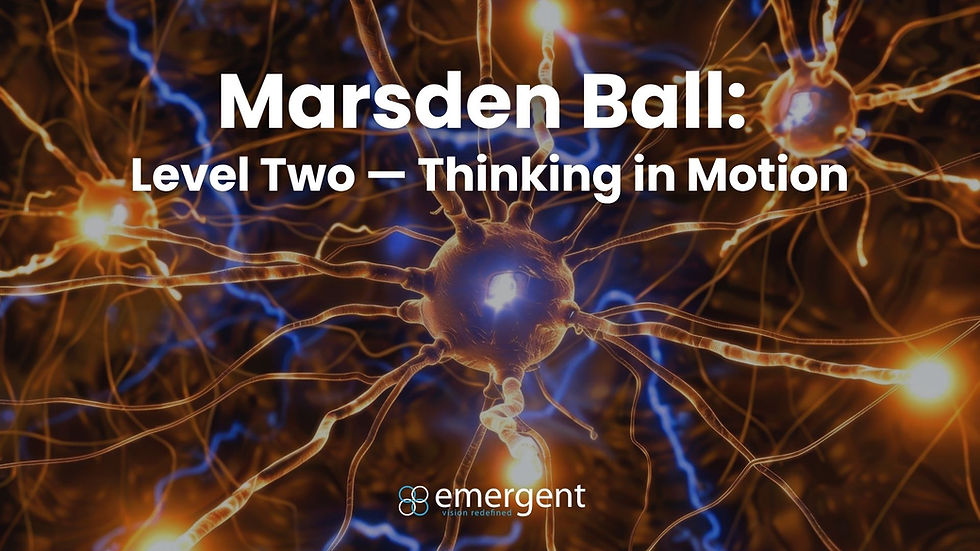Brock String Level Four: Vision in Motion
- Robert Nurisio, COVT

- Aug 1
- 3 min read

Level Four of Brock String therapy takes everything the patient has built so far—accurate fixation, flexible vergence, and gaze stability—and brings it into motion. Known as Dynamic Movement, this level requires the patient to maintain a clear bead and a stable X while the entire body is in motion. Rather than just shifting head or string positions like in Level Three, the patient now moves through space, integrating full-body movement with precise visual control.
This level often begins with simple forward and backward walking along the Brock String while focusing on a specific bead. As the patient walks, the goal is to keep the bead single and the X pattern clear, regardless of changes in depth or posture. Other variations may involve weight shifting, sidestepping, stepping on and off a balance board, or even moving in rhythm to a metronome. These tasks challenge the patient to integrate posture, motion, balance, and vision in a coordinated and fluid way.
Dynamic Movement reinforces the idea that vision does not happen in isolation. In everyday life, we rarely stand still while looking at a fixed object. We read while walking, drive while scanning, and play sports while constantly moving. In Level Four, the Brock String becomes a real-world simulation tool. The patient must hold the “where am I” (body in space) and “where is it” (object in space) concepts from Skeffington’s model simultaneously, all while maintaining efficient visual processing.

This level also strengthens the connection between the visual and vestibular systems. The inner ear’s vestibular apparatus monitors movement and balance, and it must stay in constant communication with the eyes to keep the world stable as we move. When this connection is weak, people may experience dizziness, disorientation, or visual blur during movement. Brock String Level Four builds that visual-vestibular link by gradually increasing movement complexity while reinforcing visual clarity.
To further challenge the system, therapists may integrate multitasking, such as adding verbal recall, balance challenges, or reaction-time tasks while the patient maintains bead fixation. These layers not only push the boundaries of visual-motor integration but also simulate the kind of multitasking real life demands—like holding visual focus while listening in class, navigating a hallway while responding to conversation, or tracking a ball while planning your next move. The Brock String becomes a safe space to rehearse complexity before facing it in the world.
At this point, patients often begin to surprise themselves. What once required intense effort becomes effortless. They can shift their gaze and their body simultaneously, recalibrate in motion, and recover when they fall out of alignment. The skill becomes embodied. They’re no longer thinking about how to see—they’re simply seeing. Their confidence grows because their visual system is finally supporting them, not working against them. Brock String Level Four is more than a finish line. It’s a launching pad. It marks the point where the patient has developed the skills, awareness, and adaptability needed to use vision as a tool—not a barrier. From this level forward, vision is no longer something that holds them back. It becomes the way they move through the world with clarity, balance, and confidence.
The Brock String progression is just one of 20+ vision therapy activities you'll master in our Emergent VT Basics Course (VT 101). Gain the complete foundation that transforms your practice and patient outcomes!





Comments